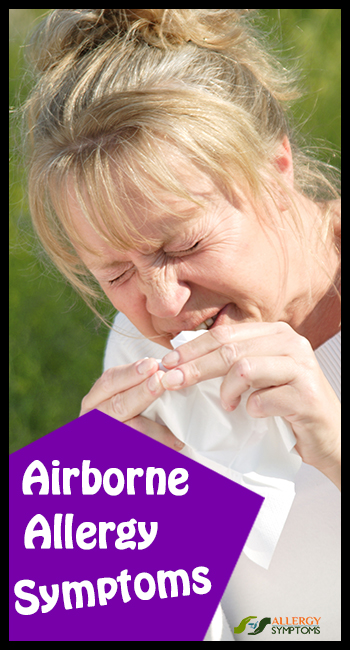Sneezing and runny nose is not always the symptom of cold, sometimes it is caused due to allergic reaction from air. Allergy season may be tough time for many especially to children. In fact recent studies have shown that over 50 million Americans suffer from allergies.
Well, if you are on among them then you don’t need to worry because here in this article we are going to tell you about symptoms and causes of airborne allergies.
What is Allergy?
Allergy is adverse reaction of your immune system which comes in contact with substance that is mostly harmless. As you encounter your pathogens, your immune system develops antibodies to recognize and attack these invaders.
Sometimes it can target to regular things in the environment such as dust, then every time you come in contact with dust, your body releases anti bodies called histamine. This leads to allergic reaction where the body shows different kinds of symptoms.
Symptoms of Airborne Allergy are as Follows
- Sneezing or runny nose.
- Itching eyes, nose and throat.
- Watering eyes.
- Coughing allergy shiners
- Hay fever
- Swelling of the lips and face.
- Hives
- Wheezing
- Flake or peel
Those who are having airborne allergy, as soon as allergen lands on mucus membrane, chain of reactions occur which leads to release of histamine and other chemicals through the tissues.
These chemicals contract with the cells that line inside the blood vessels of nose, this allows fluids to escape in the nose and causes swelling, coughing as well as nasal congestion.
Causes of Airborne Allergy
Hay Fever
Hay fever is commonly known as allergic rhinitis, it’s a seasonal allergy that causes itching. After inhaling an allergen such as pollen, it leads to itching of eyes, nose and mouth.
The allergic reaction to airborne pollen grains affects the mucus membrane of mouth, nose and eyes.
Insect Sting
Bees, wasps and fire ants all these insects transfer their venoms to humans during the sting. An allergic reaction to this substance may cause itching to any part of the body, not just the sting site.These may also cause respiratory problems.
Food or Drug Allergy
Allergic reactions to foods or drugs may also cause itching. Itching, rashes elsewhere in the body are also a symptom of food allergy.
Peanuts, milk and milk products are major source of allergies in some people. Itching is often accompanied by swelling of the body which arises within one or two hours after being attacked by the allergen.
Pollen Allergy
Each season whether it’s a summer, spring or fall, tiny particles are released from trees and grass which are known as pollen. Even though their mission is to fertilize the other plants but they may never reach their targets.
Instead of that they enter in human body and cause allergies called as pollen allergy.
Pollen allergies often develop sensitivities to other trouble makers that are present in the environment such as dust mites.
Mold Allergy
Molds and yeast belong to the family of fungus. Yeasts are single cells which are divided to form clusters and molds consist of many cells that grow branching cells called hyphae.
When people inhale, microscopic fungal spores or sometimes fragments of fungi can cause allergic rhinitis. This allergy can be worsen by having foods like cheese, processed with fungi, dry fruits and other foods containing yeasts.
Animal Allergy

Household pets are major source for allergic reactions. Especially cats, which produce multiple allergens. These allergens are found on the skin and saliva of cat.
Studies have shown that cats are not hypoallergenic, the house with more than one pet can cause high level of allergies.
Chemical Sensitivity
For some people chemicals present in paints, perfumes, carpets, plastic may also cause allergic reaction to their skin and produce rashes and itchy feeling.
Diagnosis
People who have allergy symptoms such as runny nose and sneezing should consult the specialist who can recognize the pattern of allergens.
The doctor will examine the mucus membrane which often appears swollen and pale in person with allergic attack.
Some of the tests are undergone to diagnose which are as follows:
Skin Test
Skin test is one way to check the person’s Ige antibody in skin which reacts to a specific allergen.
The doctor use diluted extract from allergen such as dust mites and pollen which are commonly found in local area. This extract is injected in the person’s skin or applied on patients arm or back.
A small raised, reddened area with a surrounding flush may appear on test area. This helps to doctor to identify whether the person is allergic to particular allergen or not.
Blood Test
People who suffer from eczema cannot be tested through skin test. There is another diagnostic test which uses blood sample from the patient to detect the levels of Ige antibody to a specific allergen.
Treating People With Allergens
There are several treatments available for airborne allergies and you can prevent this allergy by following some of the precautions shown below:
The first and best way to avoid allergens is having a purifier in your home. The air purifier works to strip the air of these harmful contaminants and prevent them from entering in to the lungs.
Anti Inflammatory Nasal Sprays
Anti inflammatory sprays are highly affective and only tiny doses are needed.It also helps in stopping inflammation in the nose. Anti inflammatory spray can be applied directly to the nose when allergic reaction starts.
Antihistamines
Antihistamines works best to control the symptoms which are caused by releasing of histamines.
Anti histamines are less effective compared to anti inflammatory sprays but it can treat airborne allergies without side effects.
Older anti histamines cause drowsiness, this is an advantage for the people who have disturbance in sleep.
When to Consult Doctor?
If your symptoms have serious effect on you then you need to consult doctor immediately before it leads to some other disease.

